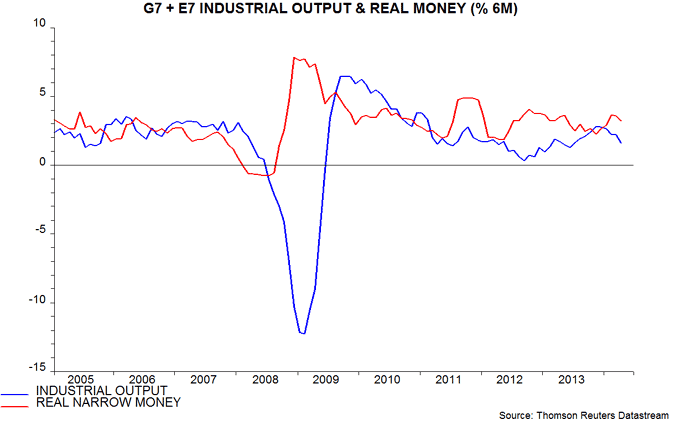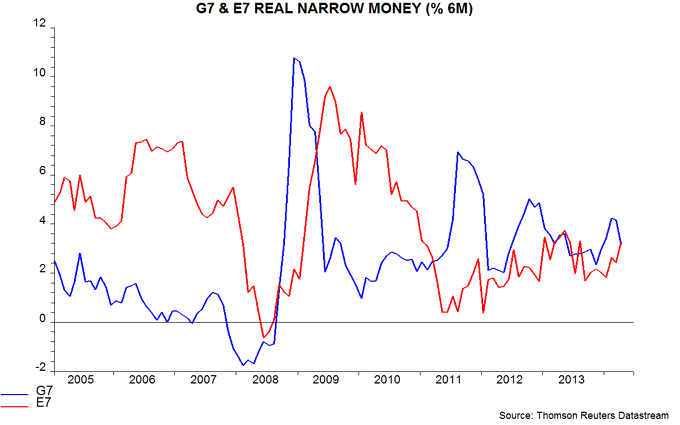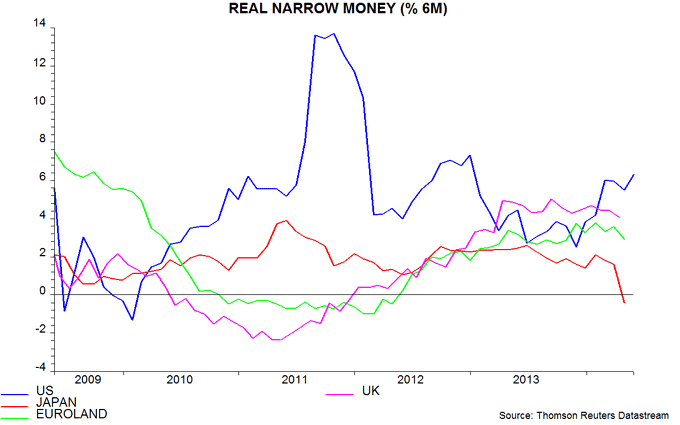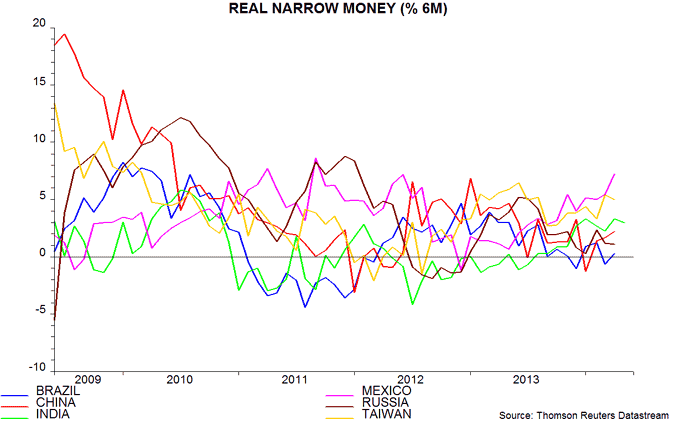Global real money growth supported by E7 recovery
Global* six-month real narrow money expansion slipped back in April but the decline was attributable to a sales-tax-driven rise in Japanese inflation. Trends elsewhere remain solid, suggesting favourable economic prospects through late 2014, allowing for the typical half-year lead.
Global six-month industrial output growth has fallen sharply from a November peak, consistent with a monetary slowdown from spring 2013 through the autumn – see first chart. Real money expansion, however, rebounded between November and February / March, signalling economic reacceleration between May and August / September.
The fall in global real money growth in April reflected the G7 component; E7 expansion, by contrast, rose to an eight-month high, suggesting improving economic and equity market prospects – second chart.
The G7 fall was mainly due to a temporary inflation-driven contraction in Japanese real money – third chart. Narrow money trends remain strong in the US and to a lesser extent the UK with the Eurozone lagging – see previous post.
Among the E7, real money growth is booming in Mexico and Taiwan but remains weak in Brazil – fourth chart. India is solid while China has recovered. Russian expansion is soft but the fall-out from the recent crisis has been smaller than expected.
*Global = G7 developed economies plus E7 emerging markets.
**May estimate included in chart.





Reader Comments